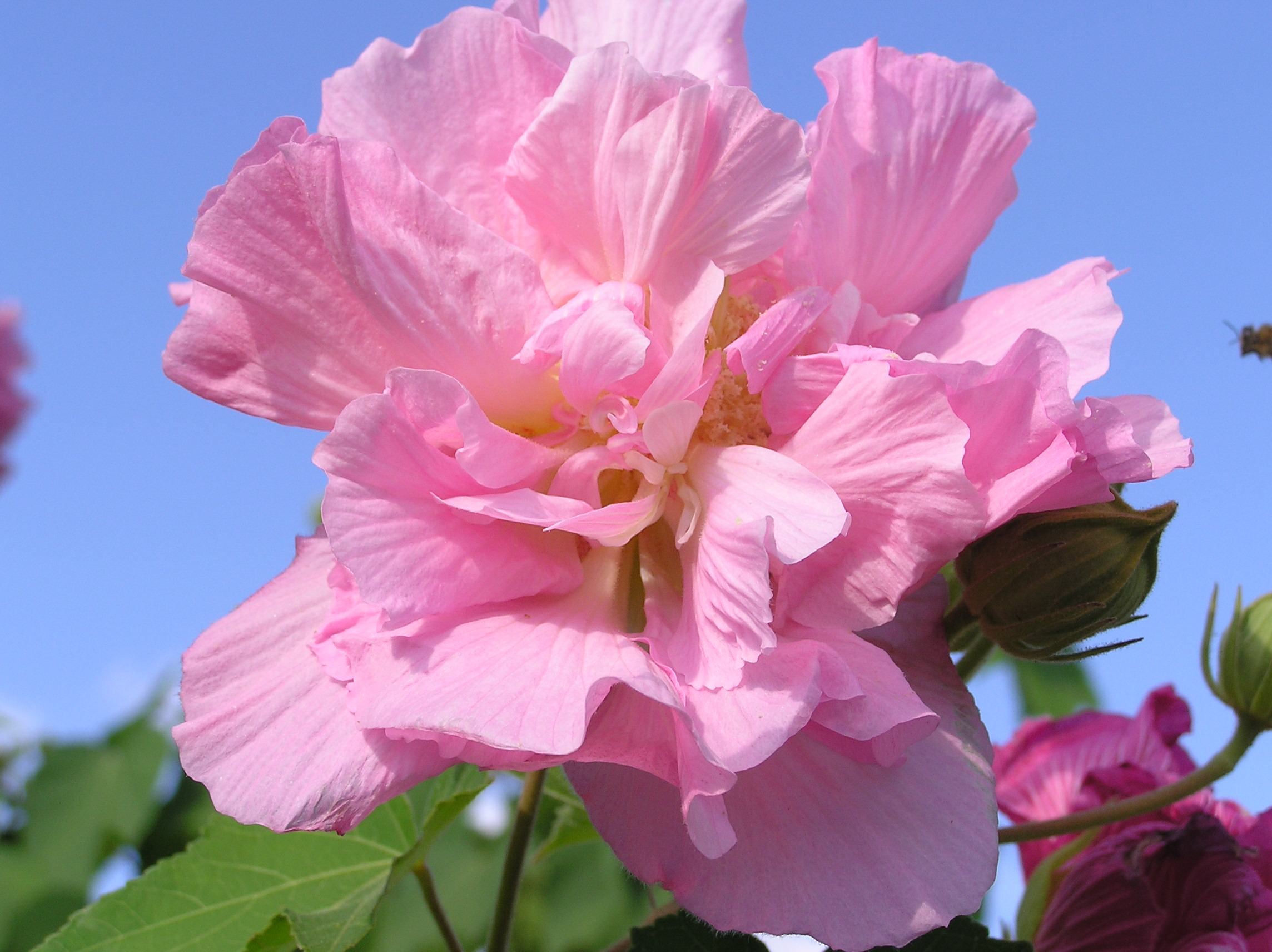
by Larry Williams | Sep 9, 2014
What plant is found mostly in older landscapes but is poorly available in most local nurseries, is closely related to okra and cotton but is called a rose and produces showy fall flowers that turn from white to pink or red? Give up?
The plant is commonly called confederate rose. Some people call it cotton rose. Its botanical name is Hibiscus mutabilis.
Confederate roses usually begin blooming in late summer and continue to flower well into fall.
Even though it’s frequently referred to as confederate rose, it’s not a member of the rose (rosaceae) family. It belongs to the mallow (malvaceae) family, which includes numerous ornamentals, cotton and okra.
It is a true hibiscus. But, unlike many other ornamental hibiscus species, for some reason it is not usually found in most local garden centers. The plant finds its way into other landscapes simply by one gardener sharing a cutting with another gardener.
It’s easy to propagate. New plants can be started in spring from seed or from 8 inch long terminal cuttings taken during spring, summer and early fall. Cuttings can be rooted in a conventional propagation bed or even in a glass of water.
There are several forms of confederate roses. The cultivar known as ‘Rubus’ has deep pink flowers. ‘Plena’ has double white flowers that change to pink or red on the second day. The older, original types have double flowers that open white in the morning and gradually turn pink in the afternoon.
Even though confederate rose is not very impressive during spring and summer with its cotton or okra like leaves, you may find it a worthwhile landscape plant as it produces its large flowers (some up to 6 inches across) in late summer and fall.
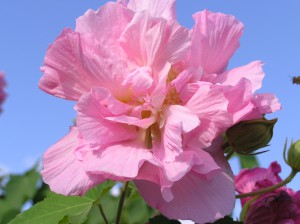
Confederate rose in bloom, Photo Credit: Santa Rosa County Extension
With proper care, a confederate rose should grow into a 15-foot tall bush during a single season. But expect the entire plant to be killed to the ground during the winter. But it usually sprouts rapidly from the crown the following spring. Be careful, too much fertilizer can result in lots of leaves but few blooms.
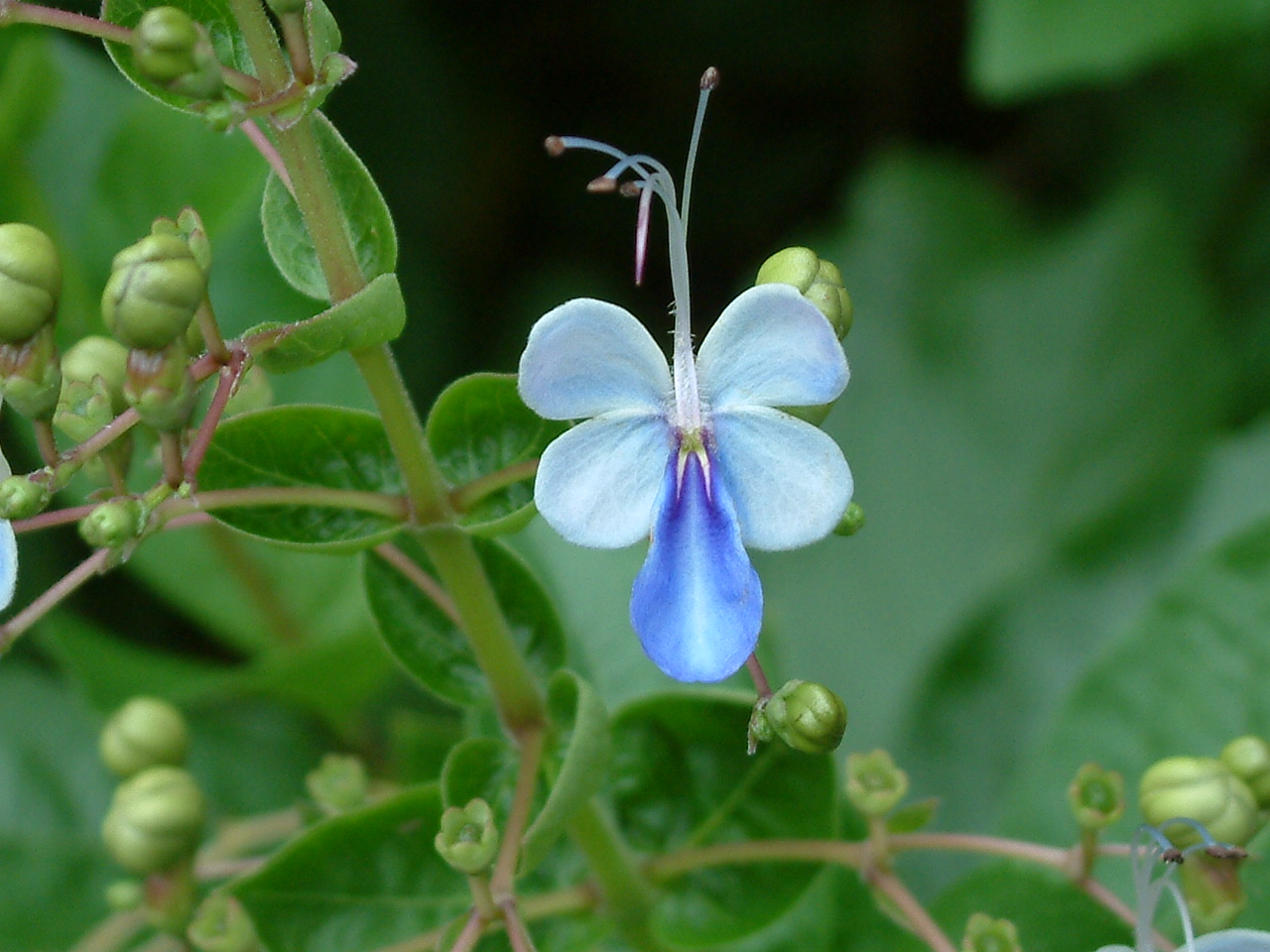
by Beth Bolles | Sep 2, 2014
Many species of butterflies are flitting through summer gardens but a special butterfly has recently made its appearance in perennial gardens. The Blue butterfly bush, Clerodendrum ugandense is a mid to late summer blooming plant that has unique flowers resembling butterflies.
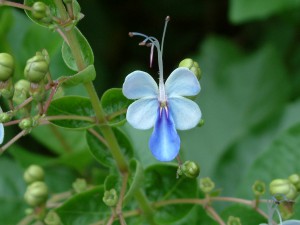
Photo: Beth Bolles, UF IFAS Extension Escambia County
During our hottest days, light blue flowers appear above attractive green foliage. Plants may grow between 6 and 10 feet in height when provided with partial shade and moisture during the warm season. Although butterfly bush is a frost sensitive plant, it will likely return from the roots in hardiness zones 8 and 9. Even when replanted in the spring, it grows well enough that you will enjoy a flowering display by summer’s end. Plant your butterfly bush to accommodate a spreading growth habit and where garden visitors can get a close view of the interesting flowers.

Flower panicles. Photo: Beth Bolles, UF IFAS Extension Escambia County
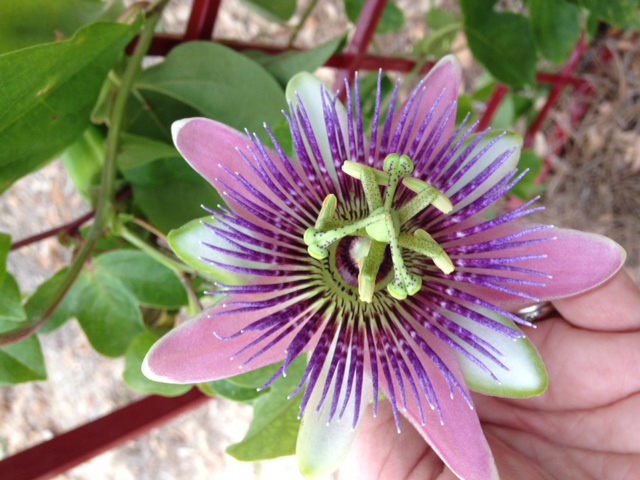
by Julie McConnell | Sep 2, 2014

Purple passionflower
Gulf Fritillary caterpillars have a voracious appetite for purple passionflower vine Passiflora incarnata! This native vine is a host for the Gulf Fritillary Butterfly Agraulis vanilla larvae, is easy to grow, and readily available in garden centers.
Like any other vine, it grows quickly and may spread across your garden, so keep this in mind when choosing a location. It prefers full sun, is drought tolerant, adapts to many soil types, and should be given support for twining tendrils. Purple passionflower has intricate purple flowers that are followed by the fruit called a maypop, which is another common name for this vine.
Gulf fritillary butterflies are primarily orange with some black and white markings. They prefer sunny areas and adults will feed on nectar from many different flowering plants. However, they are more specific about where they will lay eggs because the diet of the caterpillar is more selective than adults.
If you have purple passionflower in your landscape, look for tiny yellow eggs and orange caterpillars with black spikes to see if you have a backyard Gulf fritillary nursery. Plants may be totally defoliated by the hungry caterpillars, but healthy plants can tolerate the damage and should flush back out without difficulty.

by Mary Salinas | Aug 19, 2014
Is your pet one of those that likes to nibble on or gobble down new plants in your home or landscape? If so, it would be wise to make sure that the new plants you introduce do not send you running with your pet to the vet. There are many common plants that can adversely affect the health of your cat or dog. Symptoms range from mild nausea and vomiting to death, depending on the plant species and the amount ingested.

Lantana is toxic to cattle and horses as well as to pets. Photo credit: Mary Derrick, UF/IFAS Extension
This is a sampling of some common indoor plants that are toxic to pets: alocasia, amaryllis, Ti Plant, English Ivy, dieffenbachia, Chinese evergreen, philodendron, corn plant, cyclamen, desert rose, dracaena, peace lily, pothos, and schefflera.
Some landscape plants that may cause a problem include: azalea, bird of paradise, caladium, cape jasmine, Carolina jessamine, chrysanthemum, daffodil, day lily, kalanchoe, lantana, oleander, and sago palm.
For a comprehensive list visit the ASPCA website or The Humane Society website for more information and a comprehensive list.
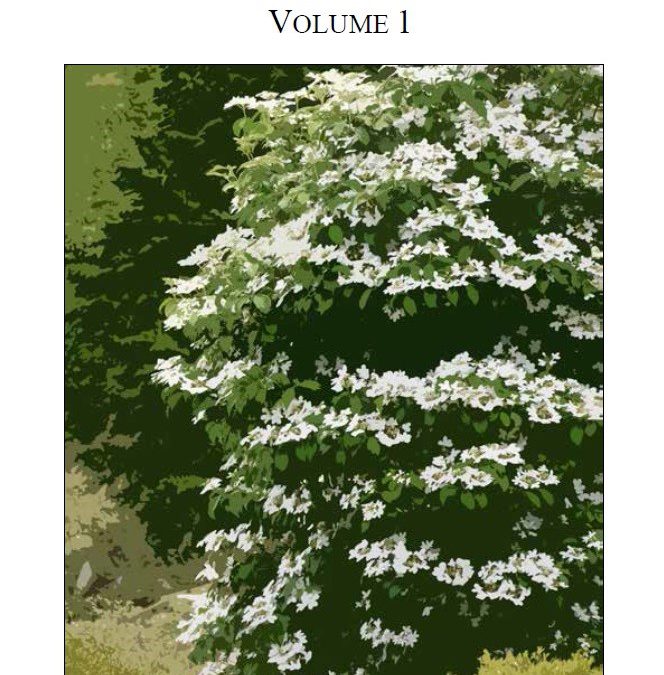
by Gary Knox | Aug 19, 2014
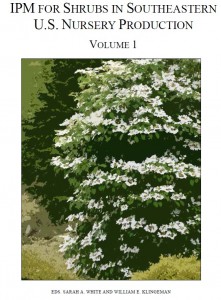 A new IPM guide is making it easier to grow five common southeastern shrubs. Growing five southeastern shrubs is now easier thanks to a free, new IPM resource from the Southern Nursery IPM Working Group.
A new IPM guide is making it easier to grow five common southeastern shrubs. Growing five southeastern shrubs is now easier thanks to a free, new IPM resource from the Southern Nursery IPM Working Group.
IPM for Shrubs in Southeastern U.S. Nursery Production is a compilation of Integrated Pest Management (IPM) information for five major shrubs in nursery crop production in the southeast. This 175 page book covers sustainable management for insects, mites, diseases, and weeds for these shrubs, as well as nursery production information. This IPM resource was developed for nursery growers although professional landscape managers and collectors of these plants also will find the information valuable.
Individual chapters cover abelia (Abelia spp.), camellia (Camellia spp.), shrub rose (Rosa spp.), blueberry (Vaccinium spp.) and viburnum (Viburnum spp.). Each chapter provides comprehensive information on the species, primary cultivars and their nursery production. Major pests, diseases, weeds and abiotic disorders are presented for each genus along with sustainable management methods and tables listing labeled pesticides and fungicides by mode of action and site. An additional chapter discusses weed management in shrub production. Future volumes covering additional shrubs are anticipated.
Edited by Clemson University’s Sarah A. White and University of Tennessee’s William E. Klingeman, this free guide was developed by the Southern Nursery IPM Working Group, including University of Florida NFREC’s Gary Knox and Mathews Paret. The award-winning, multi-disciplinary group is composed of experts from universities across the southeast. This group formed in 2008 to develop and deliver educational programming to the southern U.S. nursery industry and Extension personnel. The team recently won the 2014 Bright Idea Award from the Friends of Southern IPM and Southern IPM Center.
This resource joins the tree IPM book previously released by this group, IPM for Select Deciduous Trees in Southeastern US Nursery Production. The tree IPM book is similar to the new resource in that it contains IPM information for insects, mites, diseases, and weeds of nine major tree crops as well as production information. Individual chapters cover birch (Betula spp.), cherry (Prunus spp.), crapemyrtle (Lagerstroemia spp.), dogwood (Cornus spp.), chinese elm (Ulmus parvifolia), magnolia (Magnolia spp.), maple (Acer spp.), oak (Quercus spp.) and redbud (Cercis spp.).
Both books can be downloaded free through iTunes (http://www.apple.com/itunes/) or each chapter is available as a free pdf through the Southern Nursery IPM Working Group website, http://wiki.bugwood.org/SNIPM. A limited number of hardcopy books were printed and distributed to authors. Thanks to the Southern Region IPM Center for their generous support to make this resource possible!
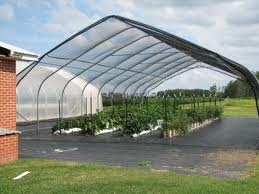
by Eddie Powell | Aug 12, 2014

Shade House for early fall crop
Credits: UF/IFAS
In fall, many Florida homeowners enjoy growing their own vegetables but are faced with late summer heat issues. This happens during the first few days of August here in north Florida. Most cole crops are recommended to be planted for the fall as early as August 1, but they must be protected from the hot weather or they may need to be replaced if hot weather damages them. A diverse selection of both heat-resistant and tender plants should be planted in order to prevent total devastation of the garden by extremely hot weather.
The site selection for tender plants should be number one on your list when protecting from heat. Fall vegetable plants need a site with good air flow to protect them from the early season hot temperatures. Arranging susceptible plants along a shade barrier can protect them from direct hot sun, especially from afternoon sun. Poorly drained soils result in weak shallow roots which are more susceptible to drying out during a heat wave.
Plants grown with the correctly applied rate of nutrients will tolerate hotter temperatures better and recover from wilt injury faster than plants grown with little to no nutrients. Watering vegetable garden plants early in the day can help protect them. A well-watered soil will stay cooler than a dry soil and keep plants hydrated. However, saturated soil conditions can damage the root systems of most plants over a few days, so make sure the ground is well-drained.
Healthy vegetable plants are more resistant to heat than vegetable plants weakened by disease, insect damage, or nematode damage. Routine inspection for pests and implementation of necessary control measures are essential. Feel free to contact your local county extension office for information on pest identification and recommended controls.
Shade cloth coverings can help protect vegetable plants more from extreme hot temperatures during the beginning of fall gardening. Shade Cloth that extend to the ground and are not in contact with the vegetable plants foliage can lessen heat injury to the plant. If the vegetable plant foliage is in contact with the cover it is often dried out or injured because of heat transfer from cover the foliage can burn the leaves. One example of excellent plant covers is shade cloth or even an old trampoline cover. To learn more on heat protection of vegetable plants call your local UF/IFAS Extension Service












